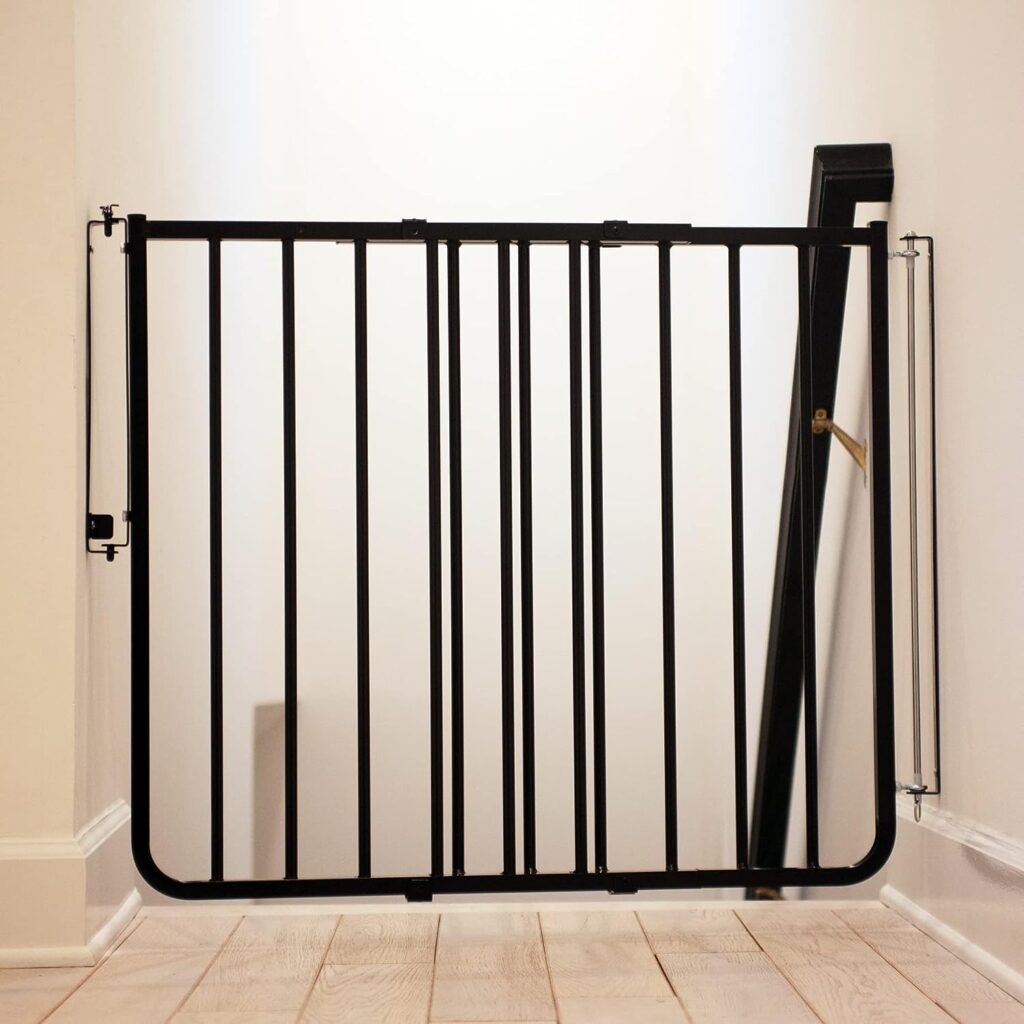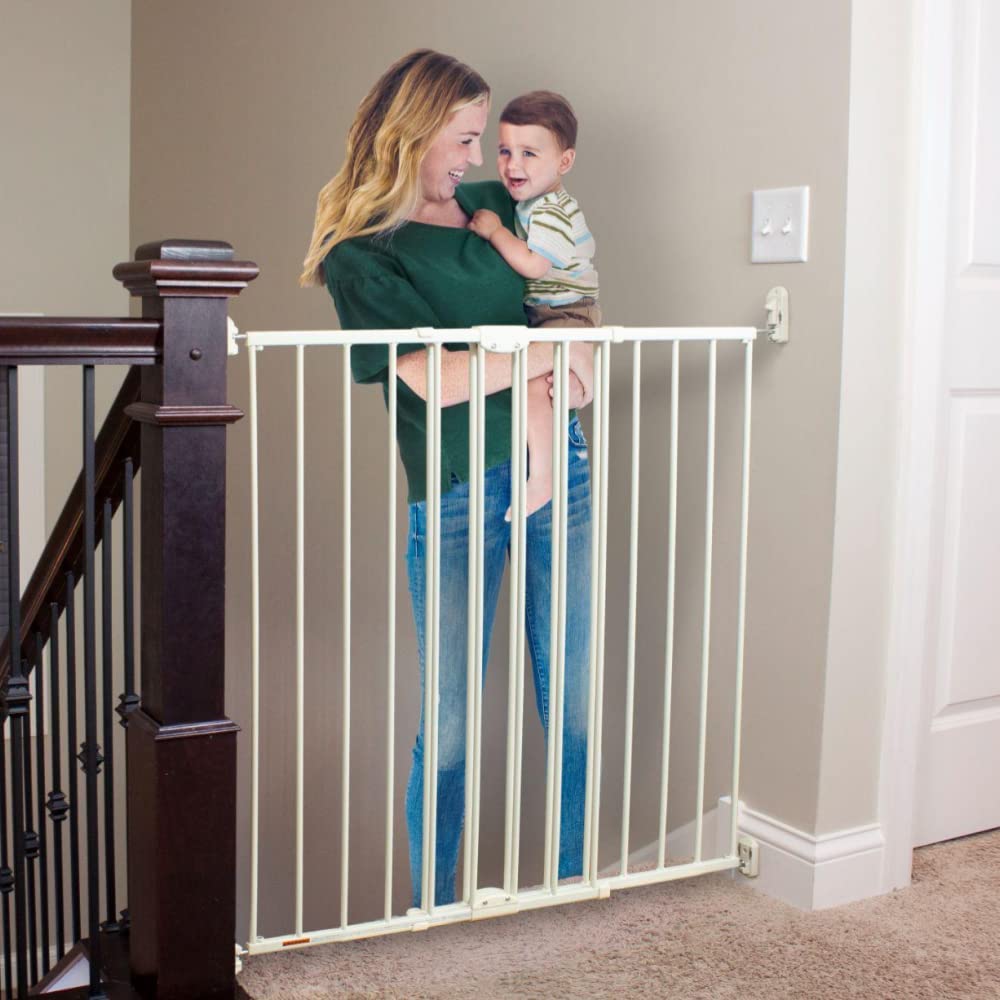We are willing to bet that no parent wants their baby or toddler to suffer an electric shock. Baby proofing electrical outlets and cords throughout the home is the best way to prevent this from happening.
But where should you start?
You are bombarded with opinions and information the second you bring your little bundle of joy home. That can make even the thought of babyproofing incredibly overwhelming. You need to keep your little one safe while still being able to plug in your TV.
You can go over your home many times on your own, and it is still easy to miss things. And, trust us, your baby or toddler will show you if you do.
We have created this guide to show you not only how to babyproof your electrical outlets and cords but also what products you can use and how to guide your child and teach them to avoid danger and stay safe.
Why Do We Need to Baby Proof Electrical Things in Home?
Babies and toddlers spend a lot of time on the ground exploring. This means that they have easy access to electrical cords and outlets and are more likely to grab at and chew on cords and poke at electrical outlets with anything they can find. This can cause choking hazards, electrical burns, and shocks.
According to Electrical Safety Foundation International, 2,400 children in the United States are treated for injuries related to electrical outlets each year. With the outlets and cords sitting at eye level, it is tough for them to not be curious.
According to a study conducted by the National Library of Medicine, sixty-nine percent of electrical-related deaths in children occur inside the home. That’s why it is so important to take every possible step to babyproof and prevent potential accidents.
How to Baby Proof Electrical Outlet
According to the U.S. Consumer Product Safety Commission, over 24,000 between 1991 and 2001 visited the emergency room for injuries related to electrical outlets. Half of these were toddlers at two and three years old. They are considered the highest risk group.
No one wants their child to become part of these statistics. The best way to avoid this is to locate all the outlets in your home and determine the type that you have. Next, you need to make them impossible for your child to access.
Type of Electrical Outlets
According to the US Department of Commerce International Trade Administration, there are fifteen different types of outlets that can be found in homes around the world, and each is assigned a letter. In the United States, the most common outlets are Type A and Type B.
Type A outlets are typically two-prong and are most likely found in older homes. They were created for function but not necessarily with safety in mind. Type B outlets are three-prong outlets, and they have been required in homes and other new structures since the 1960s.
Three-prong outlets are considered “grounded” outlets. The ground wire in three-prong outlets works to reduce the risk of shocks. Two-prong outlets in your home mean that it is outdated, and you should make every effort to replace them with three-prong outlets. In homes, you will generally find two types of three-prong outlets: GFCI outlets and AFCI outlets.
1. GFCI Outlet
GFCI outlets are most often found in rooms where they are most likely to be around water. These outlets can be identified by the buttons in the center labeled “reset” and “test.”
These buttons allow you to test the effectiveness of the outlet and reset it if it comes in contact with something (such as water) that might interrupt the current and cause it to shut off.
2. AFCI Outlet
AFCI stands for “Arc Fault Circuit Interrupter.” While their purpose is similar to the GFCI, they operate differently. These outlets are designed to interrupt arcing: electricity jumping from wire to wire.
This can be a huge fire hazard and be especially dangerous if wires are old or damaged.
Electrical Outlet Covers
One of the most effective ways to babyproof electrical outlets is to use electrical outlet covers. They will guard the outlet from curious little hands. Before settling on one type of outlet cover, take some time to learn about the three outlet covers on the market
1. Electrical Outlet Caps / Plugs
Outlet caps are a popular choice for new parents. They are made of plastic, often with two prongs that fit in the outlet. This keeps your baby or toddler from sticking things into the outlet holes. It also takes a lot of effort for those tiny hands to pull the cover out of the outlet.
There are a lot of different types of outlet covers available, and they are easy to find at nearly any retailer.
2. Electrical Outlet Box
An electrical outlet box is great for keeping little hands away from the outlet, especially when electrical cords are plugged in. A huge plus is that they can be used outdoors and well as indoors. They cover the entire outlet and are big enough to house the plugs and cords.
The outlet cover saves parents from having to unplug appliances when they are not in use. Some of the best outlet covers use a two-button release that prevents little ones from breaking in.
3. Electrical Outlet Cover / Safe Plates
Electrical outlet covers, also known as safe plates, have slide covers that prevent your little one from poking fingers or items into the outlet holes. They replace your original outlet covers entirely. Once they are installed, the cover slides to the side to close access to the holes.
They can be physically moved to expose the holes and plug in the appliance. Once the cord is unplugged, the cover automatically slides to cover the plug holes again.
How to Baby Proof Electrical Cords
Outlets aren’t the only electrical hazard in the home. Once the outlets are babyproofed, it’s time to turn your focus to the electrical cords. Your baby can easily access cords to many appliances that you might not consider such as your cell phone charge, hair dryer cord, entertainment appliances, and more.
Mobile babies and toddlers can easily get their hands on these cords in a myriad of ways. They can:
- Trip and fall over cords
- Chew on cords
- Grab at damaged cords
- Create a choking hazard by wrapping the cord
These issues can cause electrical burns, shocks, and more. Taking preventative steps can keep your little one safe.
1.
Create an Outlet Barrier
A simple way to keep your baby or toddler away from cords and outlets is to create a barrier with furniture. Placing a couch, chair, or other piece of furniture in front of it can discourage your baby from trying to gain access.
2.
Create an Outlet Barrier
Naturally, there are times when you cannot block your outlets or prevent your child from being within arm’s reach of an electrical cord. Cord covers and shorteners are an excellent way to limit electrical cord access. A cord shortener is simply a cover that allows you to wind the cord inside keeping your child from pulling or chewing on it.
3.
Use Duct Cord Covers
Many people use electrical tape to strap long cords to the floor and prevent their babies and toddlers from grabbing and yanking them. However, it is possible for your child to pull at the tape and still access the cords.
A more effective method is using duct cord covers. They are plastic or silicone covers with space for multiple cords to string through. They lay on the floor and prevent tripping and access to the cords themselves.
4.
Use a Cord Sleeve
Home media centers have many cords that often get tangled and pulled. Again, electrical tape can be an effective method of wrapping the cords together and preventing the tangling and temptation for children to pull.
However, we recommend using a cord sleeve. It is much harder to remove than electrical tape and keeps the cords effectively wrapped together. They also do not pose a choking hazard the way electrical tape might.
4.
Use Cord Protectors
Cord protectors don’t keep your baby or toddler from accessing the cord, but they can prevent your child from biting or bending the cord. If the cord is kept from being damaged, then your baby cannot access a damaged cord, and you do not have to continually replace electrical cords or appliances.
How to Baby Proof Power Strips
There are many products on the market that help make power strips less accessible for your baby. When selecting a product, it is important to determine if it is a baby-proof item, or only for cosmetic purposes.
1.
Power Strip Covers
The most common baby proofing items for power strips are power strip covers, which ensure that the baby cannot put their fingers into the sockets or access the power switch. These products can be found in a range of styles to fit different sizes and shapes of power strip, so it’s helpful to look for one with the right dimensions.
2.
Place Them Out of Reach
Power strips can also be made less accessible by placing them in an area the baby can’t reach such as under furniture. Be sure to follow the recommendations for safe use of any device before going this route, as well as checking that the power strip can’t be pulled by the cord into an accessible area.
3.
Cord Covers and Shorteners
Cord covers and cord shorteners can keep the baby from pulling the cords that would move the power strip to an accessible location. Long, unsecured cords from items plugged into the strip may also pose a trip hazard, or even a strangulation risk, so consider combining safety items.
What to Do in Some Conditions:
1. What to Do If a Baby Gets Electrocuted?
It is possible to take all the necessary steps to prevent an accident and still have something happen. If your baby or toddler is electrocuted, it is important that you take immediate steps to prevent further damage.
First, don’t panic. Seeing your child hurt is terrifying, but it is crucial that you keep your wits about you. Shut off the power source and immediately call emergency services. If you cannot remove the plug or shut off the circuit box, remove your child from the current using a nonconductive object preferably made of plastic or wood.
Second, follow first aid steps. Check for a pulse and any injuries. If there is a pulse, use rescue breathing. If there is no pulse or rescue breathing is not effective, move to performing CPR.
Refer to the American Red Cross First Aid steps to properly prepare yourself for such an event.
2. What to Do With Exposed Electrical Wires?
Exposed electrical wires are extremely dangerous and can easily cause severe injury if not properly managed. Ideally, you should contact an electrician to repair the issue. If you are unable to get an electrician immediately, there are some steps you can take on your own.
Cut the Power Source
Most importantly, cut off the source of power to the wires by shutting off power from the circuit breaker. If your breaker is not clearly labeled, it might take some trial and error to find the correct circuit. If you cannot pinpoint the proper breaker, you can shut off the power to the entire house.
Cover the Exposed Wire
You should only use electrical tape to safely cover the wire. Wrap the tape until the wire is completely covered and inaccessible to tiny bare hands. It is important to not use covering the wire as a permanent fix and remember that it needs to be replaced. However, on a temporary basis, the electrical tape should suffice.
Replace the Electrical Cable
It is preferable that you have an electrician replace the exposed wire cable, but if you have some basic electrical knowledge, it is possible for you to do it yourself. Make sure that the power source is turned off and that the correct connectors are joined together in the new cable. If it is an exposed wire on an electrical appliance, simply replace the cord or the appliance.
3. What to Do If a Baby Likes Unplugging Electrical Devices?
The most important part of redirecting your baby from unsafe behavior is saying “no”, and ensuring that they understand that it is dangerous. Using statements that identify exactly what is dangerous can be very helpful. For example, you could say “No, we can not touch the outlet. It can hurt us!”
Children and babies explore the world to learn and stimulate their brains. Giving your child an alternative activity can provide an exciting new distraction and a safe way to explore. By giving your child a toy that is similar, like blocks or other toys that fit together they can explore without being in danger.
Utilize protective equipment such as outlet covers and cord shorteners to keep your little one from getting their hands on dangerous electrical items. When possible, move these things out of their reach.
If all else fails, it may be necessary to remove them from the area. Calmly moving to another room or a safe play enclosure ensures that your baby is safe and distracted from the desire to play with cords and outlets.
A Quick Summary
It is crucial that you take the time to identify potential electrical hazards and find ways to make them inaccessible to your child. Babies and toddlers are curious and persistent, so you have to stay one step ahead of them at all times.
Go through your home and look for:
- Long cords attached to frequently used appliances.
- Cords hanging over counters, benches, and shelves.
- Cords running along the ground.
- Unused or rarely used outlets.
- Frequently used outlets within easy reach.
Take your time, and maybe even crawl around on the floor to see what hazards might be at eye level for a curious child. Taking these steps can make your home safer all around.








